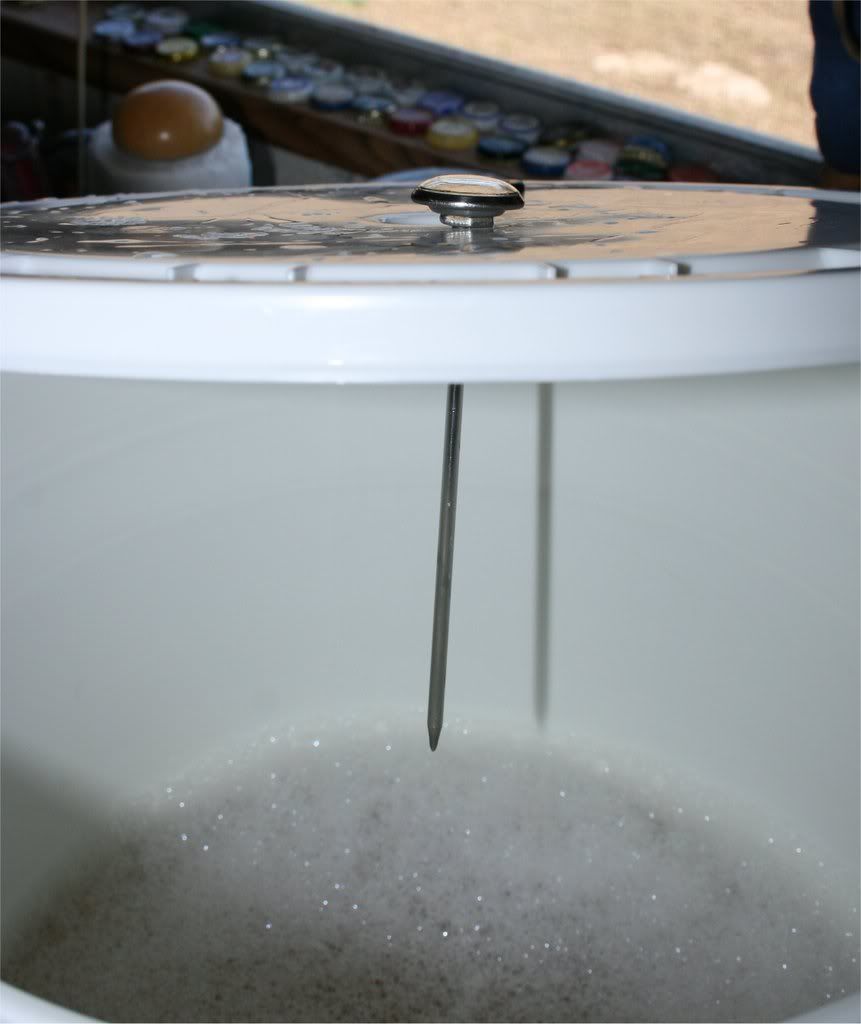hopvine
Well-Known Member
Most of us know that fermentation is an exothermic process, meaning it produces heat. That is why we often notice that the temperature reading on the carboy (if you have a Fermometer attached) is higher than ambient temperatures. A 6 - 8 degree difference between AIR temperature and WORT temperature (depending on the rigor of fermentation) is pretty common.
However, more and more often I'm seeing posts that state that the temperature of the wort at the CENTER of the carboy differs from the temperature of the wort near the outside, and therefor the temperature listed by a Fermometer strip or a thermometer attached directly to the carboy is drastically unreliable. I believe this is a misconception stemming from the fact that in a SOLID (i.e. a block of metal with a heat source at the center), there is very often a thermal gradient between the center and the outside. This science does not hold true for liquids with fluid currents.
Here's what we can say without a doubt:
1) Liquid is a better thermal conductor than air
2) Glass is a better thermal conductor than air
3) Fermentation is an active process (i.e. fermenting wort is not stagnant, it moves)
Taking those three facts into account, we can then deduce that:
1) The temperature of the carboy is influenced much more by the wort temperature than the air, because fluid is more thermally conductive
2) No drastic thermal gradient from edge to center is possible due to the high fluid currents in the fermenter, which establishes a constant thermal equilibrium.
I am not claiming that a fermometer is 100% accurate, but unless there is some voodoo science going on here, there certainly isn't a 5 - 10 degree difference in temperature between the wort at the edge of the carboy vs. that at the center.
However, more and more often I'm seeing posts that state that the temperature of the wort at the CENTER of the carboy differs from the temperature of the wort near the outside, and therefor the temperature listed by a Fermometer strip or a thermometer attached directly to the carboy is drastically unreliable. I believe this is a misconception stemming from the fact that in a SOLID (i.e. a block of metal with a heat source at the center), there is very often a thermal gradient between the center and the outside. This science does not hold true for liquids with fluid currents.
Here's what we can say without a doubt:
1) Liquid is a better thermal conductor than air
2) Glass is a better thermal conductor than air
3) Fermentation is an active process (i.e. fermenting wort is not stagnant, it moves)
Taking those three facts into account, we can then deduce that:
1) The temperature of the carboy is influenced much more by the wort temperature than the air, because fluid is more thermally conductive
2) No drastic thermal gradient from edge to center is possible due to the high fluid currents in the fermenter, which establishes a constant thermal equilibrium.
I am not claiming that a fermometer is 100% accurate, but unless there is some voodoo science going on here, there certainly isn't a 5 - 10 degree difference in temperature between the wort at the edge of the carboy vs. that at the center.









![Craft A Brew - Safale BE-256 Yeast - Fermentis - Belgian Ale Dry Yeast - For Belgian & Strong Ales - Ingredients for Home Brewing - Beer Making Supplies - [3 Pack]](https://m.media-amazon.com/images/I/51bcKEwQmWL._SL500_.jpg)
















































